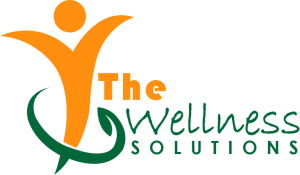Employee wellness programs are an essential part of fostering a healthier, more productive workforce. But creating a successful program requires more than just offering wellness initiatives—it’s about keeping employees engaged and motivated. A high level of engagement leads to better health outcomes, improved productivity, and a reduction in healthcare costs and employee turnover.
Here are 15 actionable steps to help boost participation and engagement in your workplace wellness program.
Tailored Wellness Challenges
A one-size-fits-all approach doesn’t work for everyone. Tailor your wellness challenges to meet the interests and needs of your employees. Whether it is a step challenge or a nutrition challenge, make sure to customize programs that resonate with your workforce.
Gamify Wellness Goals
Gamification turns wellness goals into fun, competitive activities. Think virtual treasure hunts, wellness trivia, or step challenges with prizes for winners. Adding elements like leaderboards and rewards encourages friendly competition, motivating employees to engage more with the program.
Social Wellness Initiatives
Group activities foster camaraderie and engagement. Organize group yoga sessions, fitness challenges, or even team-based charity runs. Employees are more likely to participate when they feel part of a community.
Incentives and Rewards
Offering tangible rewards such as gift cards, extra PTO, or even health-related benefits can inspire participation. By aligning rewards with employee interests, you can motivate them to engage consistently.
Wellness Workshops
Educating employees about the benefits of wellness is key to keeping them engaged. Offer workshops on stress management, nutrition, or the importance of exercise. Employees are more likely to participate when they understand the “why” behind the initiatives.
Leadership Involvement
Leadership plays a crucial role in engaging employees. When company leaders participate in wellness programs or lead by example—whether through walking meetings or encouraging a healthier lifestyle—it shows employees that wellness is a priority.
Employee Feedback Channels
Engagement thrives when employees have a say in the program. Regularly seek feedback through surveys or focus groups to ensure the program aligns with their preferences and needs. Feedback also helps you adjust and improve the program over time.
Wellness Challenge Calendars
Create a calendar with monthly or weekly wellness challenges that promote physical activity, healthy eating, and mental well-being. A variety of challenges can help employees stay engaged throughout the year.
Flexibility and Choice
Provide a range of wellness activities to accommodate different interests and fitness levels. Offering flexibility ensures that employees can choose the activities that work best for them, leading to higher participation rates.
Peer Support Networks
Encourage employees to support one another by creating peer support networks or buddy systems. Whether through group workouts or having a wellness mentor, peer support builds accountability and strengthens engagement.
Celebrate Milestones
Recognize and celebrate employee achievements, both big and small. Host health fairs, awards ceremonies, or wellness parties to mark milestones. Acknowledging progress motivates employees to stay committed to their wellness goals.
Wellness Resources Hub
Centralize wellness resources on a platform where employees can access information, track progress, and engage with challenges. This makes it easier for employees to stay informed and motivated to participate.
Holistic Well-Being Challenges
Wellness isn’t just about physical health. Offer challenges that cover various aspects of well-being, such as mental health, financial wellness, and social connections. A well-rounded approach addresses all areas of health and encourages more employees to participate.
Digital Engagement Platforms
Leverage technology by using digital wellness platforms. These platforms can track progress, provide personalized wellness plans, and allow remote workers to participate, making wellness accessible to everyone, everywhere.
Regular Communication
Keep employees engaged by communicating regularly about wellness programs and challenges. Use multiple channels like emails, newsletters, and notifications to keep wellness at the forefront of employees’ minds.
By implementing these strategies, you can create a wellness program that not only attracts employees but keeps them engaged, motivated, and healthier. A well-engaged workforce leads to higher productivity, better health outcomes, and reduced healthcare costs—making wellness programs a win-win for both employees and employers.


